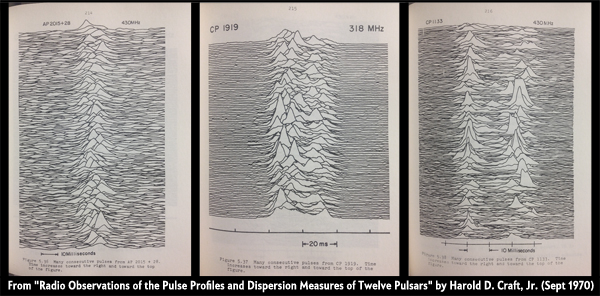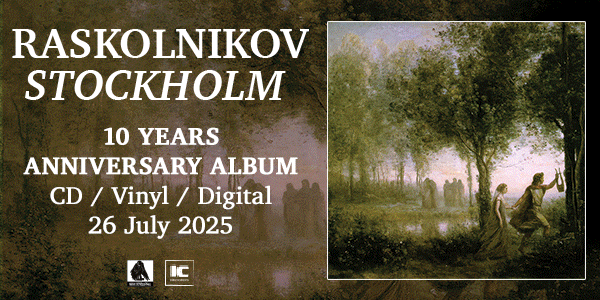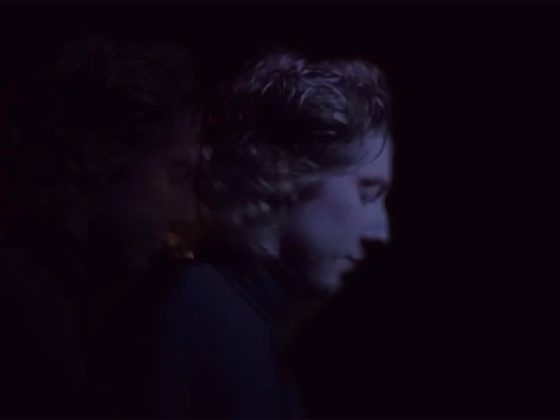We have started a series of animations over at post-punk.com, with the first being the story of Pulsar CP1919 that Joy Division’s Bernard Sumner suggested to graphic designer Peter Saville use for Joy Division’s debut LP Unknown Pleasures.
The image featured on the album cover was the plotting of Pulsar CP 1919 by radio astronomer Harold D. Craft, Jr. that was part of his PHD 1970 dissertation.
Saville took the image, reversed the colors to be white on black, and then had it printed on a textured card. This ultimately resulted in the creation one of the greatest sleeves of all time, for one of the greatest albums of all time.
Radio…Live Transmission…
But…exactly what is Pulsar CP 1919? It has more significance than most people realize. In fact, It was actually the first Pulsar ever observed! On November 28th, 1967 Jocelyn Bell Burnell and Antony Hewish observed pulses of radio waves separated by 1.33 seconds that originated from the same location in the sky from the constellation Vulpecula. Looking for explanations for the pulses they determined it could not be a man-made radio frequency interference, or instrumental effects. Despite doubting they found a radio signal from an alien civilization, they nicknamed the signal LGM-1, an abbreviation of “little green men“. Their pulsar was officially dubbed CP 1919 (Cambridge Pulsar 1919, with the “1919” being the Pulsar’s right ascension).
The word “pulsar” is a contraction of “pulsating star”, with the star in this case being a Neutron Star, a tiny city-sized star of around 20 kilometers comprised primarily of neutrons. This is the result from the gravitational collapse of a star during a supernova that is less 20 solar masses. If the collapsing star were to be any larger the result would be a black hole.
A pulsar’s “pulsing” occurs because the electromagnetic radiation from it is projected in beams (not unlike a lighthouse). These beams, only visible when they are in our line of sight on earth, are emitted from the rapidly rotating star, whose dense core gives off an extremely strong magnetic field while it spins on its axis.
Because of this discovery, In 1974, Antony Hewish became one the first astronomers to be awarded the Nobel Prize in physics. Sadly, Jocelyn Bell, who made the initial discovery operating the telescope while she was Hewish’s Ph.D student, was not awarded the prize.
Since CP1919 produces radio waves, you can listen to a recording of the star’s pulses made by the Parkes radio telescope in April of 2012.
Help us make more of these animations over at Patreon. You can vote for the next one we do!
patreon.com/postpunk

Credits:
Character design in the animation by Natassja Lehmann
Music by Matia Simovich of Inhalt
Additional Animation by Clay Adakazaam
Special thanks to Jenna Emens-Escalera for her audio engineering expertise!
*Correction, Stephen Morris, not Bernard Sumner showed the Pulsar to Peter Saville.

















 Or via:
Or via: